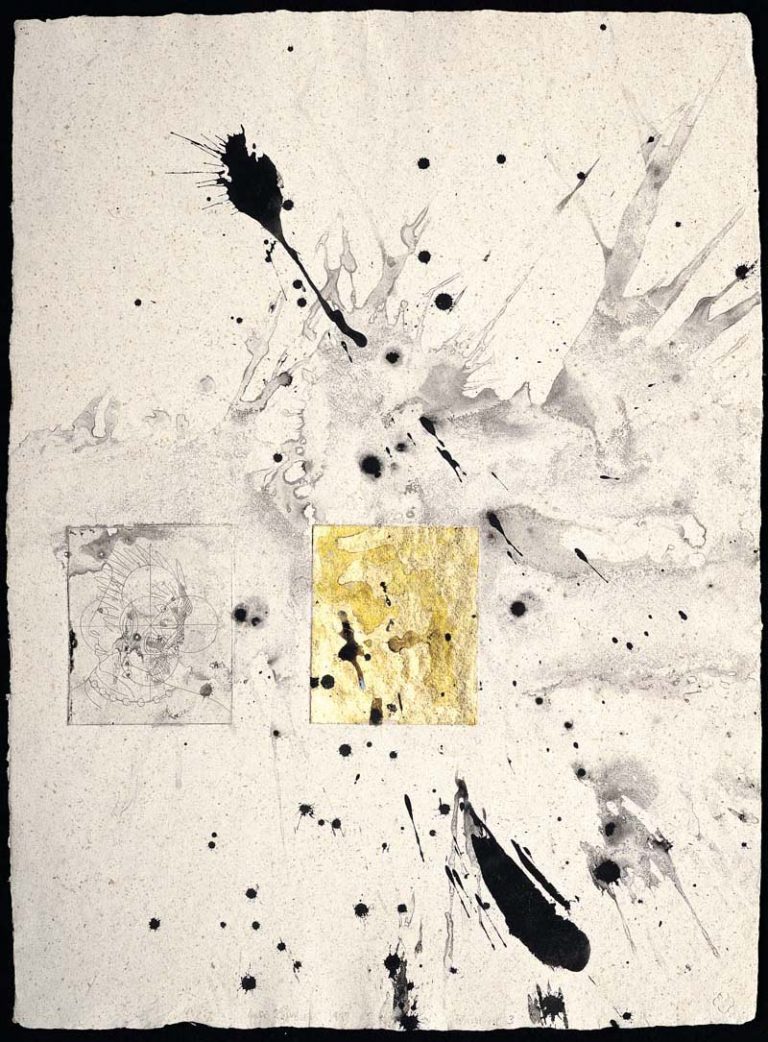We acknowledge the Traditional Owners of the land on which the Queensland Art Gallery | Gallery of Modern Art stands and recognise the creative contribution First Australians make to the art and culture of this country.

Max Gimblett / New Zealand/United States b.1935 / Brisbane – 3 1993 / Ink, drypoint and gold leaf on Indian handmade paper / 76.8 x 56.4cm / Gift of the artist through the Queensland Art Gallery Foundation / Collection: The Queensland Art Gallery | Gallery of Modern Art / © Max Gimblett
Max GimblettBrisbane – 3 1993
Not Currently on Display
Max Gimblett was based in Brisbane for approximately five weeks in 1993 as artist in residence at the Queensland University of Technology’s Tank Street studio. He had made drypoints previously in the mid 1980s, in Sydney with the artist Alun Leach-Jones.
The artist’s drawings represent a slow, layered approach to building up an image, often based on a geometric symbol — a circle, square or quatrefoil, or they are what he terms ‘quick, with no mind’, where sumi ink is used in a spontaneous, calligraphic manner. There is considerable variety within these two categories and they often overlap. The paper support is an integral part of the image and sheets are especially chosen for a particular motif or drawing process.
Gimblett views his drawings (which trace each stage of his career) as a major aspect of his oeuvre. They are an immensely rich source of information on his creative development as well as serving to demonstrate the working methods of a senior artist.
New Zealand-born Max Gimblett has spent the major part of his career in the United States, although he maintains close links with the Pacific and travels to Asia (especially to India and Japan) on a regular basis. The artist has consistently developed as an abstract painter and draughtsman. With both his canvases and his works on paper he has received considerable recognition in his country of origin, in Australia and in the United States.
Over the years Gimblett has evolved a personal symbolism that interweaves Jungian analysis with a range of religious thought and practice. His interest in Zen Buddhism, alchemy and psychoanalysis has matured over many years. He has absorbed the lessons of the abstract expressionists in New York and extends their investigations into an abstract art which has spiritual and metaphysical connotations for audiences today.